The ulnar artery
The ulnar artery , a. Ulnaris, is, as it were, an extension of the brachial artery and departs from it in the ulnar fossa at the level of the coronoid process of the ulna. Having described a canopy, it is directed downwards to the medial (ulnar) edge of the forearm and is located between the superficial and deep layers of the muscles of the palmar surface of the forearm. Approximately in the middle of the forearm, the elbow artery lies in the furrow between the superficial flexor of the fingers and the ulnar flexor of the wrist and follows along it to the distal forearm, where it passes over to the wrist. On its way, the ulnar artery gives off a number of branches, blood supplying the muscles of the forearm. In the region of the wrist joint it is located lateral to the pea-bones, on the flexor retainer, being covered by a short palmar muscle. On the palmar surface of the hand, the ulnar artery wraps in the direction of the radial margin, joins r. Palmaris superficialis from a. Radialis, forming a superficial palmar arc located beneath the palmar aponeurosis, arcus palmaris superficialis.

Throughout the elbow artery is accompanied by two ulnar veins, vv. Ulnares.
From the ulnar artery the following branches begin.
1. The ulnar recurrent artery, a. Recurrens ulnaris, departs from the medial surface of the initial segment of the ulnar artery and divides into the anterior and posterior branches:
A) anterior branch, r. Anterior, going upward and medially, passes on the brachial muscle under the round pronator and, rising upwards, anastomizes with a. Collateralis ulnaris inferior from a. Brachialis, giving the branches to the head of the flexor muscles, starting from the medial nadir;
B) posterior branch, r. Posterior, goes back and up, goes under the superficial flexor of the fingers and approaches the ulnar nerve. Following upward along the ulnar nerve, anastomosis with a. Collateralis ulnaris superior; Its branches participate in the formation of the elbow articular network.

2. The common interosseous artery, a. Interossea communis, begins at the level of tuberosity of the radius. Sometimes instead of one artery there are several small branches. Heading towards the distal end of the forearm, the common interosseous artery is divided almost at the very beginning of its path into two branches - the front and the back:
A) anterior interosseous artery, a. Inierossea anterior, is directed down the front surface of the membrana interossea, located between the deep flexor of the fingers and the long flexor of the thumb of the hand. At the upper edge of a square pronator or somewhat distal, the artery perforates the membrana interossea and, coming out onto its rear surface, takes part in the formation of the back network of the wrist. From the anterior interosseous artery, the artery that accompanies the median nerve leaves, a. Comitans n. Mediani;

B) posterior interosseous artery, a. Interossea posterior, moving away from the common interosseous artery, immediately perforates the membrana interossea and exits to its rear surface distal to the instep. Here the artery goes between the deep and superficial muscles of the rear of the forearm and accompanied by the posterior interosseous nerve of the forearm, n. Interosseus antebrachii posterior, follows to the distal end of the forearm, where it participates in the formation of the back network of the wrist.
From the posterior interosseous artery, in the place where it extends to the rear of the forearm, a recurrent interosseous artery departs, a. Interossea recurrens, is directed upwards under the ulnar muscle, anastomosing with a. Collateralis media; Takes part in the formation of the elbow articular network.

3. The palm carpal branch, r. Carpalis palmaris, begins at the level of the head of the ulna or somewhat higher, is directed downward and radial and anastomoses with the same branch of the radial artery.
4. The rear carpal branch, r. Carpalis dorsalis, begins at the same level with the palmar carpal branch and, passing under the tendon of the elbow wrist flexor, is directed to the rear of the wrist, where it is anastomosed with the back carpal branch of the radial artery, taking part in the formation of the rear wrist network.
5. Deep palmar branch, r. Palmaris profundus, departs from the ulnar artery at the level of the pea or somewhat distal to it, passes between the short flexus of the little finger and the muscle that removes the little finger, under the tendons of the flexor of the fingers. Here it connects with the terminal branch of the radial artery, forming a deep palmar arc.
On the palmar surface of the brush lie the surface and deep arterial arches.

1. The superficial palmar arc, arcus palmaris superficialis, is formed mainly by the ulnar artery, which, passing to the palm surface of the hand, goes under the palmar aponeurosis to the flexor tendons of the fingers. Directing toward the radial edge of the brush, it forms an arc, which is turned by convexity in the distal direction. Having reached the area of elevation of the thumb of the hand, the ulnar artery becomes thinner and connects with the end of r. Palmaris superficialis from a. Radialis.
From the superficial palmar arc, the common palmar finger arteries, aa. Digitales palmares communes, total three. They follow the distal direction to the interdigital spaces. Each of the arteries at the level of the head of metacarpal bones takes the palmar metacarpal arteries, aa. Metacarpales palmares, from a deep palmar arc and is divided into two of its own palmar finger arteries, aa. Digitales palmares propriae.
Adjacent own palmar finger arteries follow along facing to each other surfaces of II-V fingers.
From the ulnar artery to the hand, in the place where it is bent towards the radial edge of the hand, the artery travels to the elbow of the little finger.
In the area of the fingers aa. Digitales palmares propriae give branches to the palmar surface of the fingers, as well as to the back surface of the middle and distal phalanges.
Own palmar finger arteries of each finger widely anastomose with each other, especially in the area of distal phalanges.

2. The deep palmar arc, arcus palmaris profundus, is located deeper and proximal than the surface one. It lies at the level of the bases of II-V metacarpal bones under the tendons of the superficial and deep flexor of the fingers, between the beginning of the muscle that leads the thumb of the hand and the short flexor of the thumb of the hand.
In the formation of a deep palmar arc, the radial artery mainly participates. Leaving the first interstipar space on the palm surface of the hand, it is directed towards the ulnar edge of the hand and joins with a deep palmar branch from a. Ulnaris.
From the deep palmar arc, palmar metacarpal arteries, aa. Metacarpales palmares, only three. They follow in the distal direction of the arc and are located in the second, third and fourth interosseous metacarpal spaces along the palmar surface of the interosseous muscles. Here from each artery there is one perforating branch, r. Perforans. The latter penetrate through the appropriate interosseous spaces and come out on the back surface of the hand, where they anastomose with the dorsal metacarpal arteries, aa. Metacarpales dorsales.
Each palatal metacarpal artery, following in the interosseous space, bends at the level of the metacarpal to the palmar surface and joins the corresponding common palmar finger artery, a. Digitalis palmaris communis.
Arterial nets. From the arteries of the upper limb: subclavian, axillary, humeral, radial and ulnar - a series of branches branch out, which, anastomosing with each other, form arterial nets, retia arteriosa, especially well developed in the joint region
.
In the circumference of the shoulder joint there is an acromial network, rete acromiale. It lies in the area of the acromion and is formed by means of anastomotic branches between the pectoral artery (branch of the axillary artery) and the supralateral artery (branch of the subclavian artery). In addition, in the circumference of the proximal humerus there is an anastomotic connection between the anterior and posterior arteries bending the humerus (branches of the axillary artery).

In the circumference of the elbow joint, two networks are distinguished: the elbow joint network and the elbow joint network, which are united into one common elbow articular network, rete articulare cubiti. Both networks are formed by the anastomotic branches of the upper and lower ulnar collateral arteries (branches of the brachial artery), the middle and radial collateral arteries (branch of the deep artery of the shoulder) on the one hand, and on the other - the branches of the radial recurrent artery (the branch of the radial artery), the ulnar recurrent artery Branch of the ulnar artery) and recurrent interosseous artery (branch of the posterior interosseous artery). The stem cells of this highly developed anastomotic network supply blood to the bones, joints, muscles and skin of the ulnar region.
On the palmar surface of the carpal ligament there are anastomoses of palmar carpal branches, radial and ulnar arteries, as well as branches from the deep palmar arch and the anterior interosseous artery.

On the back surface of the brush, in the area of the extensor retainers, lies the rear wrist network, rete carpale dorsale.
The back network of the wrist is divided into a superficial rear wrist network, lying under the skin, and a deep rear wrist network located on the bones and ligaments of the wrist joints.
In the formation of the back network of the wrist, the rear carpal branches, rr. Carpales dorsales, radial and ulnar arteries, as well as anterior and posterior interosseous arteries.
From the deep back network of the wrist three dorsal metacarpal arteries, aa. Metacarpales dorsales, which follow distally along the second, third and fourth interosseous metacarpal spaces. At the head of metacarpal bone, each dorsal metacarpal artery is divided into two rear finger arteries, aa. Digitales dorsales. They follow the lateral surfaces of adjacent fingers facing one another and branch out within the proximal phalanges.

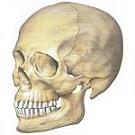
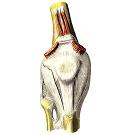
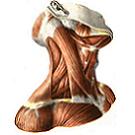
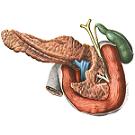
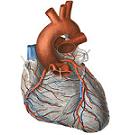

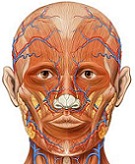

Comments
When commenting on, remember that the content and tone of your message can hurt the feelings of real people, show respect and tolerance to your interlocutors even if you do not share their opinion, your behavior in the conditions of freedom of expression and anonymity provided by the Internet, changes Not only virtual, but also the real world. All comments are hidden from the index, spam is controlled.